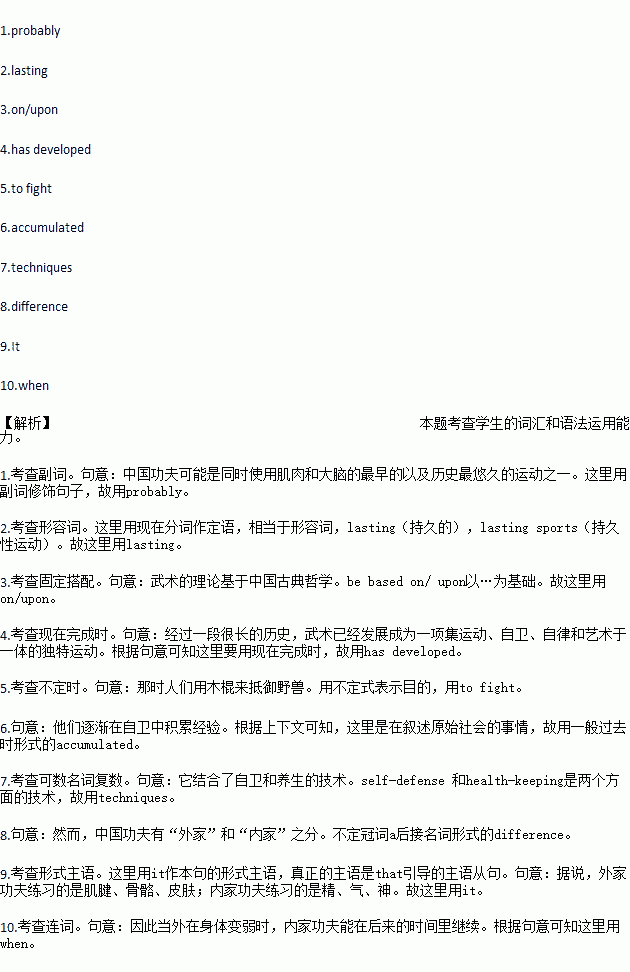题目内容
Chinese kung fu, also known as wushu or Chinese martial arts, is one of the most well-known examples of traditional Chinese culture. It is 1.(probable) one of the earliest and longest 2.(last)sports which uses both muscles and brain.
The theory of kung fu is based 3.classical Chinese philosophy(哲学). Over its long history it 4.(develop) as a unique combination of exercise, practical self-defense, self-discipline, and art.
It is estimated that Chinese kung fu dates back to primitive society. At that time people used sticks 5.(fight) against wild beasts. Gradually they6.(accumulate) experience in self-defense.
Chinese kung fu is a large system of theory and practice. It combines 7.(technique) of self-defense and health-keeping.
In Chinese kung fu, however, a 8.(different) is made between “external(外家的) and “internal” kung fu. 9.is said that “In external kung fu, you exercise your tendons, bones, and skin; in internal kung fu, you train your spirit, your qi, and your mind.” And so internal kung fu can continue later in life, 10.the external body weakens.

